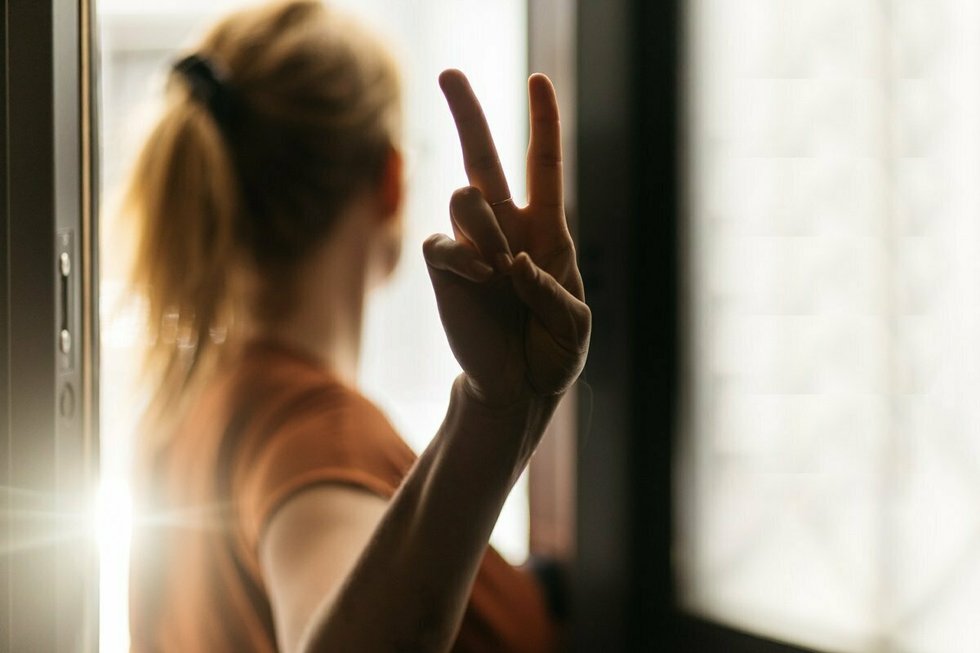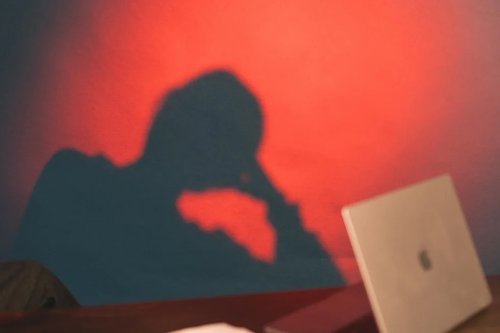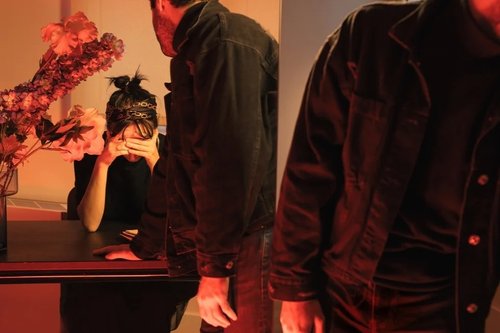Resilience is dead. Long live resilience.
Jul 20, 2021
8 mins


“Oh god, not this crap again.”
“Gaslighting 101. Accompanied [by] an uncomfortable, heavy feeling at the center of my chest and rage, helplessness in my arms.”
“Anger. Because it seems [they are] trying to manipulate me into making their problems disappear.”
When Tanmoy Goswami, a mental health journalist and lived-experience advocate, asked workers what their first, unfiltered reaction would be if their employer urged them to develop ‘resilience’, these were some of the responses he received. You can read the rest here.
Resilience is a forced response to distress. Projecting it as just another ‘skill’ for workers glosses over the systemic failures that create so much of our distress to begin with.
Yi-Fei Chen aimed and pulled the trigger.
Born and raised in Taiwan, Chen had been taught absolute respect for authority. At Design Academy Eindhoven in the Netherlands, Chen struggled to fit into a culture where everyone was expected to speak their mind. When a tutor asked her to hand in additional work without giving her enough time, Chen felt it was impossible but couldn’t bring herself to say so. One day, after the institute’s dean, rebuked her for being underprepared and a friend stood up to protest on her behalf, she finally broke down, despairing that her politeness had turned into her weakness.
At this point, Chen’s story took a turn that reads like a Marvel comic. She decided to weaponize her tears—literally. She built a gun that scooped up her tears and froze them into (harmless) pellets. At her graduation, Chen was given the chance to take a shot at her department head. Her creation became an instant hit.
When Welcome to the Jungle asked me to write a piece on resilience—the ability to bounce back from crisis—the first image that popped up in my head was of Chen holding her gun, its suction tubes attached to her face, like a cyborg superhero. Her story is five years old. The world was a different place then. Still, Chen and her gun are the perfect symbols for the choices we face today in our relationship with the idea of resilience, and the profound implications of those choices.
Why talk about resilience now? Because it is touted as a magical quality that will help humanity claw its way out of the devastation unleashed by the pandemic. In November 2020, the professional skill development platform Udemy published a report on the mental health and wellness skills that saw the biggest jumps in demand over the previous year. Demand for anxiety management skills, up 3,867%, topped the list. Resilience came in second, with a 1,296% growth in demand. In December, Arianna Huffington, former media mogul and founder and CEO of wellness solutions company Thrive Global, anointed resilience word of the year. The resilient don’t make excuses. They set examples. They don’t complain. They take their tears and turn them into something wondrous.
Recently I asked people on Twitter what their first reaction would be if their employers wanted them to participate in resilience training to cope with work-related difficulties.
“Structural inequalities cannot be resolved with resilience. I shouldn’t have to be resilient to someone’s poor management of their organization,” said one respondent.
“I’m tired of being resilient. You should have addressed the abuse of authority. Pay for my therapist,” said another.
“That I am working in the wrong workplace,” said a third.
How did we get here?
The evolution of resilience
Resilience has a wide and diverse imprint in cultural history. Fourteenth-century Japan, for instance, had papier mache dolls called okiagari-koboshi—literally, “the priest who gets back up”—toys that sprang back up after being punched. The English word resilience was first used in the early 17th century, derived from the Latin verb resilire, meaning to rebound or recoil. In the mid-1800s, resilience was used as a measure of the quality of materials used in the Royal Navy’s warships.
In the modern era, the idea of resilience started gaining traction in the 1970s, when psychiatrists and psychologists became interested in the impact of childhood trauma on development and the protective factors that allowed some children to better withstand trauma than others. In parallel, resilience became a core concept in ecological studies.
From sustainability to the military
Ann Masten, human development researcher at the University of Minnesota, is credited with giving resilience an influential definition that sits at the intersection of these various traditions. She called it “the capacity of a dynamic system” — such as the human organism or our natural environment — “to adapt successfully to disturbances that threaten system function, viability, or future development of the system.” In the following years, as concerns about environmental degradation began to intensify, the powerful hope contained in the idea of resilience became a rallying point for the sustainability movement.
A pivotal point in the evolution of resilience came in the late 1980s when an entirely different “dynamic system” sniffed out the potential of the idea. In 1987, the US Army War College coined a term to describe the dramatically new, multilateral post-Cold War world order, based on the work of leadership researchers Warren Bennis and Bart Nanus. They called it VUCA — volatile, uncertain, complex, and ambiguous. The evolution of the US government’s strategies to develop resilience in a VUCA world, from physical security to cybersecurity to terrorism, can be traced back to the chaotic 80s.
… to boardrooms
The VUCA framework would soon outgrow its military roots and establish itself as a staple of business management. In a rapidly globalizing marketplace, mastering volatility, uncertainty, complexity, and ambiguity came to be seen as the ultimate test of leadership. Resilience, variously known as ‘grit’ or ‘stamina’, had a black-tie makeover and spawned a booming subgenre of self-help and leadership books.
Now with the pandemic, resilience has leaped out of this elite context and become everyone’s moral duty. Demonstrating resilience is projected by states and corporations alike as the highest form of solidarity we owe our world—even though it is a terrifying world that we cannot relate to. We have a chance to be heroes or leaders ourselves.
The resilience-productivity-toxic positivity nexus
Here’s what we tend to gloss over: Resilience is a forced response to the distress, not another nifty workplace skill. Instead of expecting resilience from workers, employers, and society at large need to confront their own role in creating the very reasons for the distress that demands resilience—inequality, discrimination, and modern work’s productivity obsession.
As one Twitter user said in response to my question: “The problem is not me or my resilience, the problem is extra labor and mismanagement.”
In 2019, before the pandemic, the International Labour Organization declared that stress, excessively long working hours, and work-related disease contributed to the deaths of nearly 2.8 million workers every year—road accidents kill fewer than half that number—while an additional 374 million people got injured or fell ill because of their jobs.
The pandemic billed as a great reset in the way we work, has crushed workers in the informal sector, which accounts for a third of the GDP and 70% of employment in developing economies according to the World Bank. White-collar workers haven’t been immune either. Remote work has had a particularly severe impact on women and diverse groups including the LGBTQIA+ community, who report greater fears around rising workloads and performance reviews than their straight and cisgender peers. In a global study by tech major Oracle, 78% of the participants felt that the pandemic had negatively impacted their mental health.
Rishikesha Krishnan, director of the Indian Institute of Management Bangalore, explains what happens when we don’t pause to ask ourselves, “resilience for whom? And at what cost?”
During the pandemic, we as consumers have sheltered ourselves while expecting supplier companies to keep working for us—i.e. be resilient. Thousands of people have had to continue going to work despite the risks to keep the supply chains running. The biggest challenge has of course been for medical professionals.
“The costs of the pandemic have been distributed in a non-equitable manner for sure,” Krishnan said. “Organizational resilience has had human costs.”
And yet, the conversation about happiness and engagement in the workplace continues to be dominated by data on productivity, not its impact on workers’ lives. According to the World Health Organization, depression and anxiety cost the world a trillion dollars in lost productivity. Little wonder that the global workplace stress management market is slated to reach US$11 billion-US$15 billion in the next three to five years at an 8% compounded annual growth rate.
Now more than ever, workers must ‘bounce back’ and become skilled in resilience to fix the things that they didn’t break.
The dangers of resilience as just another skill
Organizational psychologist and coach Meg Mateer, a former Big Four consultant, says a ‘skills only’ approach becomes dangerous when people believe that they are suffering solely because they are not skilled enough in healthy strategies, and organizations believe their part is done after introducing these skills to workers.
This is uncomfortably close to the domain of toxic positivity. One of my all-time favorite ‘so bad it’s good pieces of advice on developing resilience reads like a slowly unfolding nightmare:
Imagine the place you currently exist [in] and slowly zoom out of yourself. Slowly zoom out of the building you’re in, out of the place, out of the state, country, and even continent. Then zoom out further—all the way through the ozone layer—until you reach the moon and you can see the whole earth. Now think about your problem again: how big is it really? What does it look like from outer space?
This kind of collective brainwashing—that the “strong” will always find a way to climb out of a crisis by digging deep within themselves—has frightening implications for the “weak” and the “undesirables”.
In his 2009 book on the decay in American society, Empire of Illusion, Chris Hedges explains how concepts from positive psychology are to the corporate state what eugenics was to Nazism. “Corporatism, aided by positive psychology, relies on several effective coercive persuasion techniques, similar to those often employed by cults, to meld workers into a ‘happy collective,’” Hedges writes. It sanctions punishments for those who don’t fit in and rewards for those who do to “destabilize an individual’s sense of self-worth and promote compliance”. Corporate culture shaped around (hyper-masculine) ideals like grit seeks to create super-workers who will sacrifice their personal wellbeing and moral fiber for their employer’s bottom line.
Referring to Hedges’ book, psychologists Oksana Yakushko and Nancy Burke write:
“The pandemic has given a renewed push to eugenic rhetoric, embracing ‘herd immunity’ (which involves a sacrifice of the weak to ensure the survival of the herd), and touting, even by a former US president, ‘racehorse theories’ (which advocate selective breeding to enhance a country’s prowess) beloved by American eugenicists and German Nazis alike, while hundreds of thousands of people are dying, many of them due to racial and financial injustice.”
The way out? Building resilient communities
One key to rescuing resilience from its current morass is admitting that any talk of resilience is useless as long as it is narrowly focused on individuals. What we need are resilient communities, not individual workers dragged through the latest pop psychology fad. Rather than chasing whatever training is the flavor of the season, organizations need to develop processes that sustain resilience. That’s the only route to becoming truly flexible and bouncing back after every setback, according to Shubhra Hajela, global wellbeing leader at IT services firm Genpact.
A case for cohesion
Any training that focuses on developing personal resilience is almost dysfunctional unless the organizational culture is addressed, says Hajela. Developing resilience lies not just in the hands of workers but involves every other stakeholder in the organization, including managers and those who set organizational policies.
One of the spiritual homes of the idea of resilience—ecology—has done important work in redefining it with communities at the forefront. For instance, via sustainability activist and Minneapolis mayoral candidate Kate Knuth, I learned about Rockefeller Foundation’s 100 Resilient Cities (100RC) initiative. Launched in 2013, 100RC defines urban resilience as “the capacity of individuals, communities, institutions, businesses, and systems within a city to survive, adapt, and grow no matter what kinds of chronic stresses and acute shocks they experience.” This definition expands the scope of resilience beyond short-term stressful events, such as a hurricane, a recession, or even a pandemic, to slow-moving risks, such as persistent inequity that frays the social fabric and leaves whole communities vulnerable.
Knuth, who has held the position of Minneapolis’s first Chief Resilience Officer, also cites the work of architect Doug Pierce who has helped develop RELi, a rating system and set of standards for not just resilient buildings, but also resilient communities. “Even if you have a building, neighborhood, or infrastructure that can weather some kind of extreme event if you don’t have cohesiveness within the population that is part of that, it’s hard for them to respond to the event while it’s happening,” Pierce said. “And they can’t rebuild afterward if they are not cohesive.”
According to Mateer, the missing piece in building collective resilience is deceptively simple: listening to people’s distress, so that we can hear the alarm signals and address the underlying systemic issues that trip us up in the first place. At the workplace, the first step towards this is encouraging and incentivizing vulnerability—from the top down. Resilience is a revolution all right. But it doesn’t have to be the kind that involves tears or guns.
Photo: Welcome to the Jungle
Follow Welcome to the Jungle on Facebook, LinkedIn, and Instagram, and subscribe to our newsletter to get our latest articles every day!

More inspiration: Tanmoy Goswami
Founding editor : Sanity by Tanmoy & lived-experience advocate

Wellbeing washing: Are workplace mental health apps doing more harm than good?
Workers are struggling with mental health. Are employers approaching it the right way?
Dec 19, 2024

Left behind: Breaking the silence around survivor guilt in the wake of mass layoffs
When you're the last one standing, should you feel grateful, guilty, or both?
Jul 08, 2024

Forget the Great Resignation, the real crisis in the workplace is grief
As experts fear that post-pandemic grief could metastasize into a public health crisis, workplaces lack policies and safe spaces to support workers.
Sep 21, 2022

‘We need each other’: Monika Jiang on combating loneliness in hybrid work
Hybrid work offers flexibility but can leave us feeling disconnected. Monika Jiang explores how we can rebuild workplace connections.
Dec 19, 2024

Struggling at work? Here are 3 steps to rebuilding your self-esteem
Low on confidence? Learn how reflection, recharging, and refocusing can help you rebuild self-esteem and thrive professionally.
Nov 27, 2024
The newsletter that does the job
Want to keep up with the latest articles? Twice a week you can receive stories, jobs, and tips in your inbox.

Looking for your next job?
Over 200,000 people have found a job with Welcome to the Jungle.
Explore jobs